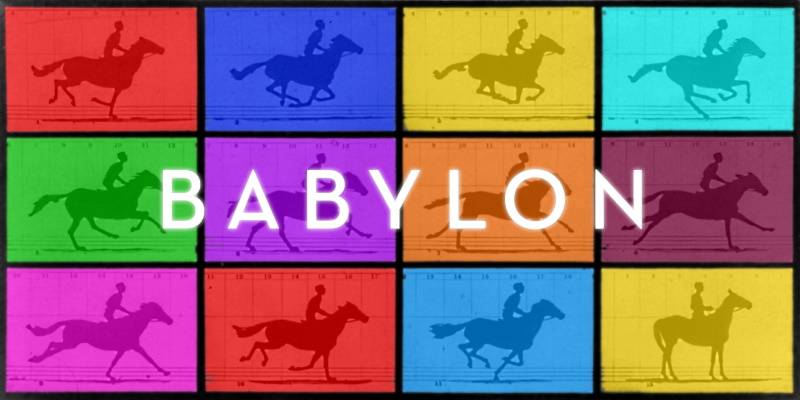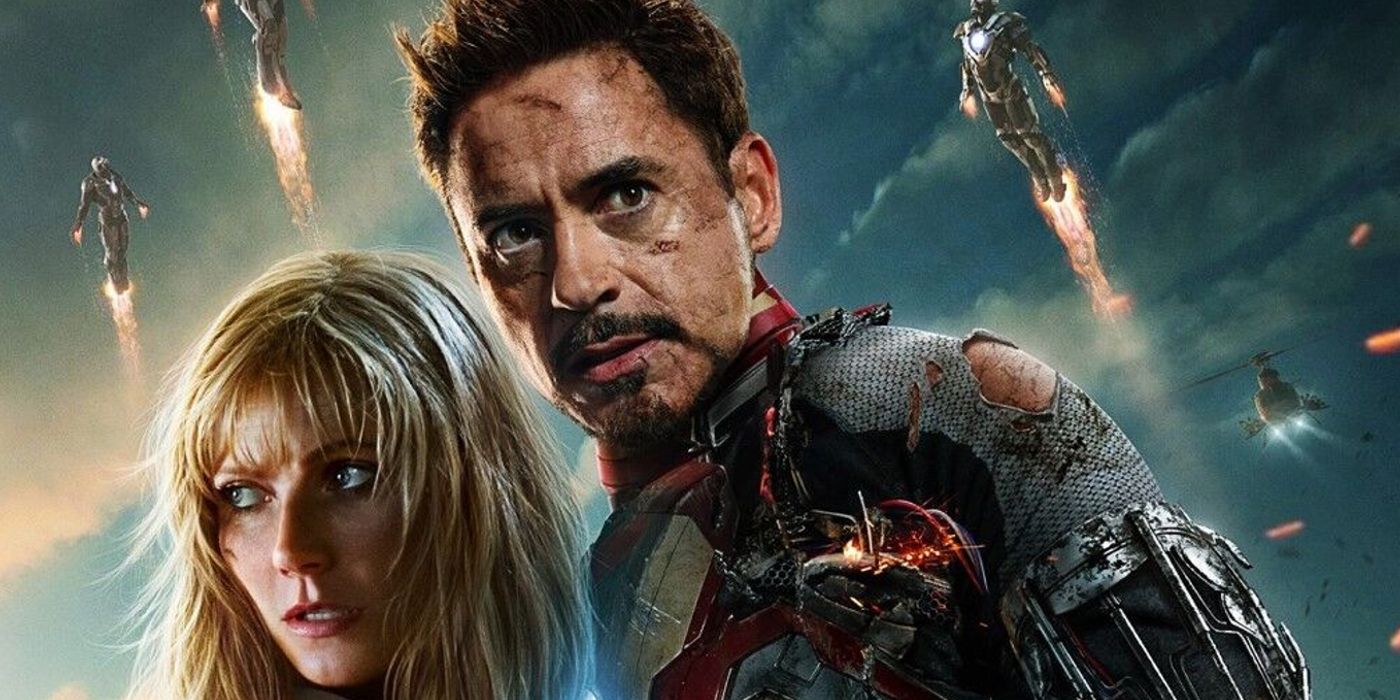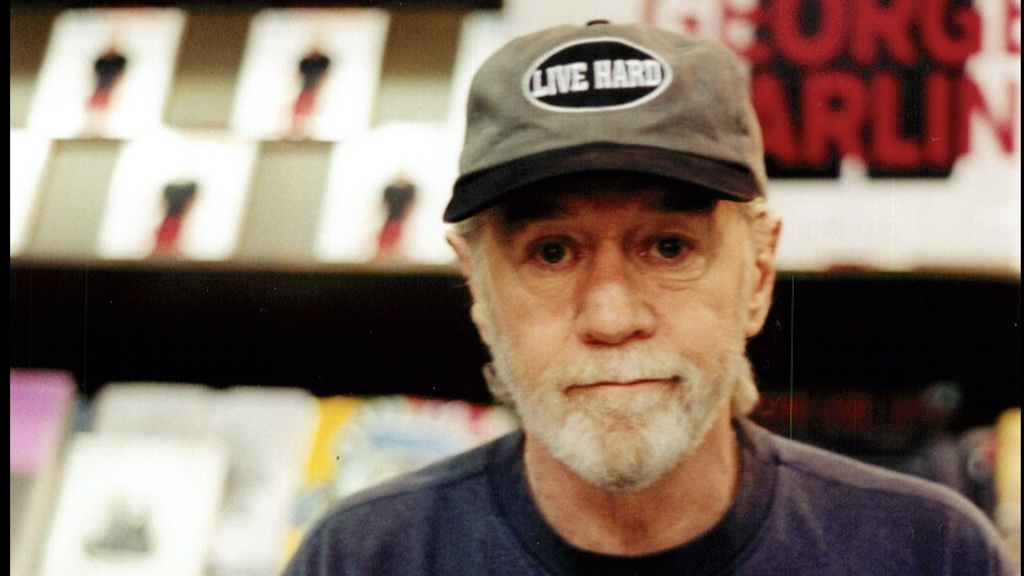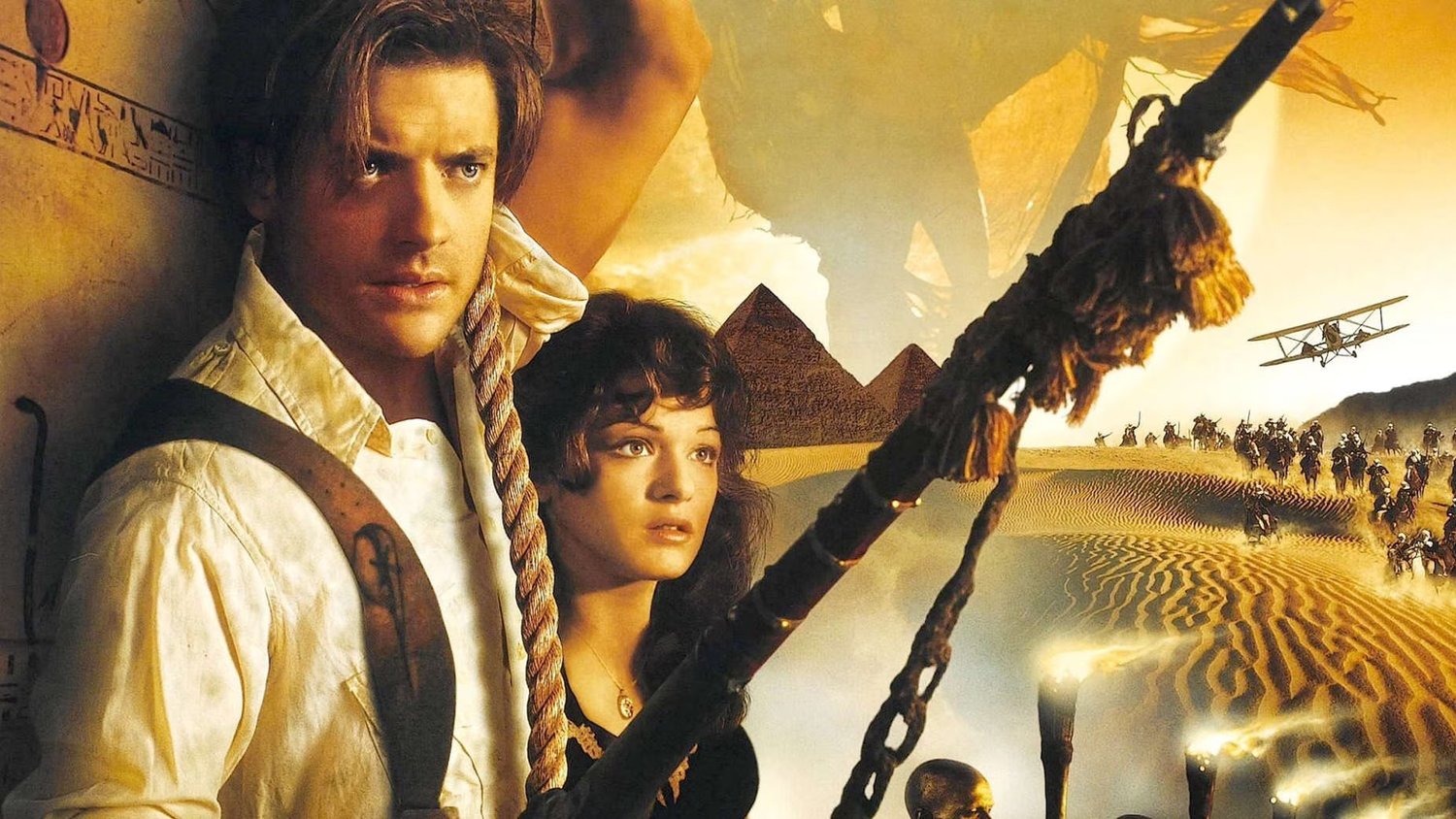
Babylon Ending: Every Movie Explained!
Feb 11, 2023
Spoilers for Babylon: If you’ve seen the film, you probably found yourself overwhelmed by the pulsing montage of movies spanning more than a century at its end, some immediately identifiable, others incredibly obscure. If you immediately wished someone would make a list of the films included and give a little explanation for each, so that you might discern which you’d like to give a second look… you’re in luck:
The Horse in Motion (a.k.a. Sallie Gardner at a Gallop) – 1878
The motion of a horse mid gallop (crucially with all four hooves off the ground at once) is captured by a series of cameras set off in succession along Salie Gardner’s (the horse) path. When viewed in succession they produce the illusion of movement. A movie.
Cat Trotting, Changing to a Gallop – 1887
Very similar to the above, the titular description is accurate. Part of Eadweard Muybridge’s Electro Photographic Investigation of Consecutive Phases of Animal Movements, Vol. 10.
The Arrival of a Train at La Ciotat – 1895
The most famous image of early cinema next to the man in the moon with a rocketship stuck in his eye. The Lumiere brothers capture footage of a train arriving into frame, before passengers disembark, through the use of their Cinématographe, an all-in-one camera, printer and projector. Among the first films shown for public exhibition, spawning a myth of terrified audience members ducking out of the way of the “oncoming” train.
Annie Oakley – 1894
Sharpshooter Annie Oakley, a star of Buffalo Bill’s Wild West show, performs a series of swift trick shots, filmed by Edison Studios before a black background to better capture the gun-smoke. Annie Oakley was available for cheap viewing at the nickelodeons.
Birth of the Pearl – 1901
In an homage to the birth of Venus, a shell opens up to reveal a beautiful woman, who slowly assumes a pose. In contrast to the actualities, comedic skits, etc. of the time, the mildly experimental Birth of the Pearl is a phantastic bit of risqué portraiture from the Biograph Company.
A Trip to the Moon – 1902
The most famous example of early cinema, bar none, and the best film from the extraordinary artist Georges Méliès, who made good on the cinema’s potential for magic. A science-fiction adventure charting intrepid moon explorers’ invention of a rocketship, and their encounters with freaky lunar inhabitants on destination Moon. Of extraordinary artistic importance.
Ali Baba and the Forty Thieves – 1902
A fantasy by one of Méliès’ contemporaries, and the first adaptation of the story, featuring some wonderful production design and special effects. The great Segundo de Chomón provides the film with its intricate colour through a stencil-based tint later named Pathécolor.
The Great Train Robbery – 1903
Several techniques being popularised at the time (most notably simultaneous action) are incorporated into an action-driven western over several “scenes”, best remembered for a blisteringly stylish, unforgettable shot of a crook facing the viewer and firing directly into the camera’s lens. Labelled by William Everson and George Fenin as the first “dramatically creative American film”.
Little Nemo – 1911
Using 4,000 drawings, Windsor McKay, appearing on screen in a pseudo-documentary about the creation of the short, animates a few of his characters, who morph, roll about and gesticulate wildly.
Intolerance: Love’s Struggle Throughout the Ages – 1916
Controversial pioneer of silent cinema D.W. Griffith’s ambitious tale of intolerance across multiple historical periods (Babylonian, Judean, French Renaissance, and modern American settings), brought to life with enormous scope and characteristic emotional subtlety (for the time). Few filmmakers were as influential as Griffith, for better and for worse.
The Champion – 1915
Charlie Chaplin, working under his own production unit, plays the Tramp, still the most enduringly beloved film character of all time, co-starring alongside a pet bulldog, in a 31-minute short. This period saw the emergence of the Tramp character’s popularity, and Chaplin’s injection of pathos into the slapstick genre. The boxing sequences precede Chaplin’s masterful ill-matched showdown in City Lights.
The Vampires or, The Arch Criminals of Paris – 1915
A serialized crime-saga coming in at 7 hours in length, wherein a journalist and their confidant attempt to uncover an underground gang. The titular vampires are not supernatural, though the film is now credited as a key point of development in the thriller genre and the techniques of inducing cinematic suspense. The character of Irma Vep, donned in a black body suit, has attained an iconic status.
Joan the Woman – 1916
The first historical epic by Cecil B. DeMille, concerning Joan of Arc, with use of the Handschiegl Color Process throughout (including the sequence seen in the Babylon montage). Historical research and all-out production as here would light the way for a great many of Hollywood’s foundational hits. Joan the Woman was very nearly a victim of early piracy when a print was stolen for the production of unauthorised copies.
Within Our Gates – 1920
The oldest surviving film by an African-American director, a drama from pioneer Oscar Micheaux. Within Our Gates is a film of great social significance, intended to portray the contemporary black experience, featuring racism, exploitation of the black worker, the debate over Jim Crow laws, ‘uncle-Tom-types’, the re-emergence of the Ku Klux Klan, female subjugation and suffrage, sexual assault, and the advent of the “New Negro”. The film also features at least one sequence which has retained an unmistakable power.
The Nightingale’s Voice – 1923
A sort of bedtime story about a nightingale who is trapped and kept for a pet by a young girl. While she sleeps the nightingale sings of its suffering, and of how it reached her on a journey from the Kingdom of Flowers, which is populated by fairies. The animals and fantasy-creatures are examples of astonishingly accomplished stop-motion.
Ballet Mécanique – 1924
An unruly, atonal mix of montage, score and imagery by abstract artist Fernand Léger, most notable for the collaboration of Dudley Murphy, Man Ray, George Antheil and Alice Prin. The overlap between post-Cubist, newly Dada-ist artists and experimental cinema pushed the expressive potential of the form in unprecedented directions.
The Jazz Singer – 1927
The Jazz Singer’s massive popularity as a pioneering talkie with sync-sound, driving silents effectively to extinction within a matter of years, is a turning point in the history of cinema, and precisely the turning point which Babylon hinges on.
Black and Tan – 1929
An outstanding example of the early sound-era genre of “race films”, also covered in a portion of Babylon. A document of the Harlem Renaissance, and the first film to feature Duke Ellington and His Orchestra, Black and Tan stages two extended musical performances, and a tragic plot built around the struggles of African American performance artists.
Hollywood Revue of 1929 – 1929
An early feature-length musical featuring three portions in Technicolor, which debuted the musical number ‘Singin’ in the Rain’, later incorporated into a feature length film about the transition from silent to sound cinema, also called Singin’ in the Rain, and then incorporated into Babylon, first into its plot and then into the very scene we’re watching as the film Manny sits down to see.
Piccadilly – 1929
The best showcase of Anna May Wong’s talents (the character of Lady Fay Zhu in Babylon is partially based on Wong), as a kitchenhand given the opportunity to dance at a London club. British film Piccadilly was to be released as a silent film, before being converted into a sound version complete with a score, sound effects and a prologue with spoken dialogue. This conversion means that filming wasn’t hampered by the static, boxed-in camera-set-ups of early sound films (as seen in the “Hellooo College” scene in Babylon), and so the cinematography has a freedom and excess that would be hampered in studio filmmaking for years to come.
The Wizard of Oz – 1939
Classic beyond classic, The Wizard of Oz and films like it (though a prestige, big budget musical without diegetic explanations for the numbers and a totally fantastical settings and story was a novel thing for the time) energised audiences to seek escapism of a new sort, whilst being arguably a preeminent example of Hollywood fantasy-, adventure-, musical-, children’s films. This is also probably the moment in time when colour began its crawl to dominate film images.
Ivan the Terrible, Part II: The Boyars’ Plot – 1944
The final work from Soviet-film-pioneer Sergei Eisenstein, finished in 1944 but censored by the Stalinist regime until 1958, with a score by one of the 20th century’s most renowned composers, Sergei Prokofiev. Stalin himself had ordered the creation of the project, seeing much of himself in Ivan, only to deride part II as “anti-historical”. The clip seen in Babylon is drawn from a colour portion, making Ivan the Terrible, Part II one of the earliest colour films of the Soviet Union, and in one who’s chief concern is imparting “majesty”.
Tarantella -1940
Edwin Gershefsky’s syncopated piano music is loosely translated into animated abstractions, squiggles and hoops and dots and such by Mary Ellen Bute and Ted Nemeth. The title refers to a dance thought to help “sweat out” the non-existent poison of a Tarantula’s bite.
Love Letter – 1953
Only the second ever female director in the history of the Japanese film industry, Kinuyo Tanaka’s directorial debut is a post-war romance about a newly hired professional writer of love letters.
Pather Panchali – 1955
Satyajit Ray’s social realist masterpiece spends time in the company of an impoverished family, centring on the youngest, Apu, who would be the focus of two more films later in life. Poetic and beautiful, yet relying totally on authenticity, Ray’s film contributed to the parallel cinema movement, whilst introducing Indian cinema to the world at a time when international filmmaking was experiencing newfound attention.
Duck Amuck – 1953
Hands down the best Looney Tune ever made, this cartoon features Daffy Duck breaking the fourth wall to address the all-powerful animator currently making a fool of him in surreal fashion. It maintains the lightly sadistic edge of many a Chuck Jones cartoon, along with the pedigree animation, though none had ever been or ever were this funny again.
This Is Cinerama – 1952
A demonstration of the new Cinerama aspect ratio depicting scenes of roller-coaster rides, national landmarks, opera performances, etc., to the tune of an Oscar nominated score. Here our screens begin to wrap around the audience’s periphery to combat the ‘stay-at-home’ competition of TV.
Ben-Hur – 1959
An essentially unequalled blockbuster religious-epic, again by Cecil B. DeMille; a tale of revenge in ancient Rome. Exorbitant sets, costumes, effects, colour, set-pieces, length, captured in glorious ultra-wide 65 mm to the cost of the highest budget yet recorded in Hollywood history, made Ben-Hur an unmissable movie experience.
Un Chien Andalou – 1929
A surrealist short by Luis Bunuel and Salvador Dali, beyond shocking for its time, and still strikingly effective today as a series of psychologically arresting images, selected and presented through free-associative dream logic. Un Chien Andalou is visceral and unsettling, best exemplified by the scene which plays out over the next few moments in the montage, involving a razor and an eye.
Psycho -1960
A split second of Psycho’s shower scene is cut between the wielding of the razor in Un Chien Andalou and the dribbling of the victim’s eye from out of the slashed pupil. Unprecedented among major releases, the slasher was essentially invented in the ‘disturbed’ Psycho by the maestro Hitchcock, baring the knife of his direction through moments of piercing violence. Shock and awe.
Dreams That Money Can Buy – 1947
Another knife wielded before the slippery conclusion of Dali and Bunuel’s film, here in a full feature by Dadaist Hans Richter. Collaborators included Max Ernst, Marcel Duchamp, Man Ray, Alexander Calder, Darius Milhaud and Fernand Léger, and the film was produced by Kenneth Macpherson and Peggy Guggenheim, with a mind to expose the wider film market to the European avant-garde. Expressing matters of the subconscious, Richter tells the story of a man who discovers he can create and sell dreams (each dream being the product of one of the artistic collaborators above).
Meshes of the Afternoon – 1943
A surrealist short of the more dreamlike quality, as opposed to associating disparate images, Maya Dern pulls the thread of a hypnogogic tone throughout a project with a recurrent quality, filmed in her own home. Bits of the short are reintroduced throughout the montage, but we start here, of course, with a close up of Dern’s eye.
The Passion of Joan of Arc – 1928
Renée Jeanne Falconetti’s landmark performance and Carl Theodor Dryer’s radical use of the close-up are two reasons this film, adapted from the actual record of Joan of Arc’s trial, has found itself among the greatest of all time as decided by the critics of the world. Chosen here is a famous shot of a tear streaking across Joan’s tortured, unblinking expression.
Vivre Sa Vie – 1962
A film by Jean-Luc Godard, an exemplar of the French new wave’s reinvention of what they considered the stayed and tired film industry. Vivre Sa Vie is a drama in 12 scenes, borrowing aesthetics from cinéma verité, in which a young woman goes to see The Passion of Joan of Arc and finds herself identifying with the heroine (not dissimilar to Manny’s experience of Babylon’s ending). The shot used in Chazelle’s montage references the indelible image from The Passion of Joan of Arc above.
Lucía – 1968
An epic feminist Cuban drama divided into three stories played out over three key periods of Cuban history, from the war for independence onward, each concerning women named Lucía.
NY. NY. – 1947
An experimental short rendering New York City into a cacophonous blend of fractured images of daily life, architecture, machinery and light, set to an avant-garde soundtrack of jazz, cartoonish sound effects and incidental background noise blown out through an echo effect. A living, incidental Cubism of sorts, which features Chazelle’s fetish for close-ups of trumpets.
The Wagoner – 1963
Understood to be the first African film by an indigenous, black filmmaker, Borom Sarret (or The Wagoner) runs 18 minutes and illustrates a day in the life of an impoverished cart driver in post-independence Senegal. Director Ousmane Sembène, armed with poetic realism (a product of Sembène’s work as an author), served as the continent’s filmic spearhead, and seemingly as one of cinema’s few prodigies.
The Black Vampire – 1953
A stylish and criminally underseen Argentinean film noir. A sort of play on Fritz Lang’s classic M, focusing on the prosecution, the mothers of the victims, and the sadistic, murderous paedophile himself like a tense, psychological vice.
2001: A Space Odyssey – 1968
Measured, realist science-fiction of a speculative nature constructed with perfect effects, 2001: A Space Odyssey is philosophically and cinematically ambitious, with an unmatched scope of subject. This is pure cinema. Tom Cross, the editor on Babylon, has cited the stargate sequence, wherein 2001’s main character is overwhelmed by the totality of knowledge bestowed on him by aliens attempting to contact human beings (depicted as an unknowable stretch of overwhelming visuals), as an inspiration for the montage ending the film.
Next is a series of stark shots; of a film projector starting up, with the reel’s cues, etc. This is taken from the opening of 1966’s Persona, which appears later on in a more significant context.
Week-end – 1967
Godard appears again, with his surreal (but not surrealist) comedy involving a couple taking the long trip to the wife’s parents’ for the weekend with the intention of killing them for the inheritance money. The title-card shown here reads “The end of cinema”.
Matrix I – 1971
Not the proliferator of bullet-dodging action, but a technical computer graphics demonstration set to the work of Spanish composer Padre Antonio Soler. As the title suggests, the imagery is composed of a matrix of horizontal, diagonal and vertical lines and shapes, which saunter delicately in and out of existence like an intricate screensaver, sometimes pulsing traces of themselves along the way. This is the first example of digital cinema in the montage.
0°‹——› 45° Version One – 1974
A short using computer output to guide and sort of paint over figures performing a dance in chromatic spaces, also devised by the computer, featuring a series of posed stick figures. What precisely went into the creation of this short is above most people’s comprehension, but a passage from HUMAN MOTION – IMPRESSION/EXPRESSION describes it as: “A solo where the dancer merges with the scenario while performing rounded or diagonal movements. The scenario is made up of diamonds and black rectangles and a sequence picked at random by the computer. The dimension of these forms are similar to the dancer’s body measures. This way the dancer and the scene are one.”
Sunstone – 1979
A ‘video sculpture’ produced through digital animation, which suggests three-dimensional space. This is the shot featuring the odd, tesseract-ish plane with faces plastered on either side. Per Electronic Arts Intermix: “Symbolic and poetic… The opening image is an iconic face, which appears to be electronically ‘carved’ from stone. A mystical third eye, brilliantly crafted from a digital palette, radiates with vibrant transformations of color and texture. Sculpting electronically, Emshwiller then transforms perspectival representation: the archetypal ‘sunstone’ is revealed to be one facet of an open, revolving cube, each side of which holds a simultaneously visible, moving video image. Created with complex technology over an eight-month period, this emblematic spinning cube metaphorically describes a three-dimensional, temporal space, both hyperreal and simulated. Emshwiller’s humanistic approach to technology ushered in the 1980s with a new electronic vocabulary for conceptualizing and visualizing images in space and time. Reflecting an image-saturated world. SUNSTONE marked a new stage in electronic art.”
Indiana Jones, Tron, T2, Jurassic Park, The Matrix and Avatar
The final few inclusions seem to be steppingstones to modern, special effects driven filmmaking. First we have Indiana Jones and the Raiders of The Lost Ark, an example of the new wave of blockbuster filmmaking thriving in post-70s cinemas, accomplished through the perfection of practical effects, while experimental work bubbled in museums and the like. Then, Tron, where the CGI pioneered on the fringes of the entertainment industry begins to invade films with mass-audience appeal, constructing fully digital spaces, but also integrating CG into a live-action film. Terminator 2: Judgement Day incorporated CGI into our world through a tangible and texturally complex, if alien, figure in the T-1000, before Jurassic Park took the industry’s first real steps towards photo realism (especially of physiologically complex models). The impossible brought to life in a new and potentially more convincing manner than ever before.
The Matrix is also here, I suppose? It did have a large stylistic influence over Hollywood for some time. And then Avatar, with its totally fabricated world, where for long stretches nothing we’re looking at is really there at all, and yet all has the authority of filmed reality. Anything is possible, and photo-realism has basically been achieved. Probably not coincidentally, Avatar is the highest grossing film of all-time. Each of the films in this final stretch of more recent memory altered the audience-at-large’s expectations for cinemagoing as well.
Persona – 1966
Makes a capper of montage as a statement on its purpose generally. Persona is as much about the nature of cinema and the very fact that it is a film being made and watched, as it is about anything.
The presiding change played out across these films seems to be in what paradigm they inhabit, and how it was developed and reinvented. How this life cycle of innovation, proliferation, death and rebirth has acted out in Manny’s life, and will carry on beyond him. Ultimately, the montage isn’t an intellectual exercise, the clips are used to create a sensorial and emotional portrait of film. As the editor put it: “The most important thing was to create something that was impressionist and experiential, rather than informational.”
Publisher: Source link
Sebastian Stan Is Donald Trump In This First The Apprentice Photo
Sebastian Stan Is Donald Trump In This First The Apprentice Photo Titled The Apprentice, the film chronicles Trump's rise in New York's business scene in the 1980s. The film will specifically delve into his relationship with Roy Cohn, the controversial…
Apr 16, 2024
The Most Loved Container Store Items According to E! Readers
The products featured in this article are from brands that are available in the NBCUniversal Checkout Marketplace. If you purchase something through our links, we get a commission. E! readers love The Container Store. And why shouldn't they? The retailer…
Apr 16, 2024
A Fan Hit Olivia Rodrigo With Flowers After She Didn't Accept Them
A fan took "giving flowers" to a whole other level by hitting Olivia Rodrigo with a bouquet after she failed to acknowledge them.View Entire Post › Disclaimer: This story is auto-aggregated by a computer program and has not been created…
Apr 15, 2024
How Gwen Stefani and Blake Shelton Took Their Love Off the Radar
Meanwhile, she was gradually getting used to Shelton's more rural comfort zone. "You've turned into a proper farm girl now, you really have," Chelsea Handler teased Stefani when the singer appeared on her Netflix show. "My nature growing up was Orange County,…
Apr 15, 2024











